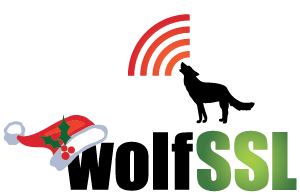Another new addition in our 5.6.2 release of wolfSSL is our TLS hardening option. This TLS hardening feature secures your TLS connections according to the recommendations in RFC 9325. When enabled, wolfSSL will: disable TLS versions older than 1.2 disable cipher suites based on ephemeral finite-field Diffie-Hellman key agreement finite-field Diffie-Hellman key agreement (i.e., “TLS_DHE_*” […]
Read MoreMore TagAuthor: Kajal Sapkota
wolfSSL bare-metal and non-blocking cryptography
One of the unique wolfSSL features is the ability to run wolfSSL on bare-metal without any Real-Time Operating System (RTOS). Supporting bare-metal has always been a requirement for our libraries from initial development. Having a pure C code base, no external dependencies, portable design and modular build options enables this feature and provides a tiny […]
Read MoreMore TagConverting Between PEM and DER made Easy!
At wolfSSL we are always trying to make the security developer’s job easier. We’ve found that a common problem facing our customers is the need to convert between PEM and DER. PEM is a Base64, ASCII encoding that is used for X.509 certificates, certificate requests and cryptographic keys. DER is a binary encoding and is […]
Read MoreMore TagwolfSSL 5.6.2 and 5.6.3 Release Vulnerabilities
wolfSSL release 5.6.2 and 5.6.3 contained 6 vulnerability fixes. The listed issues were found by external researchers (thanks to their efforts! you can see them mentioned on each of the reports). In cases where a malicious agent could analyze cache timing at a very detailed level, information about the AES key used could be leaked […]
Read MoreMore TagwolfEngine Works with the Final OpenSSL 1.1.1 Branch Release
As mentioned in a previous post, OpenSSL 1.1.1 branch of releases will hit End of Life (EoL) by September 11th, 2023. That’s right, it’s not a typo! It’s about 3 months away! It’s already listed as an old release branch here: https://www.openssl.org/source/old/ . Are you sure you are ready to tackle the migration to their […]
Read MoreMore TagwolfSSL Support for eCos
With its abstraction layers, OpenSSL compatibility layer, small size, and low runtime memory usage, the wolfSSL embedded SSL/TLS library is an excellent choice when porting to a new device or when looking to use TLS functionality in embedded environments and operating systems. One of the operating systems is the real-time eCos! eCos is a free […]
Read MoreMore TagIntroducing micropython-wolfssl
wolfSSL is excited to announce micropython-wolfssl, an external module for MicroPython that enables wolfSSL to be used for TLS and cryptographic operations. MicroPython is a lean and efficient implementation of the Python 3 programming language that includes a small subset of the Python standard library and is optimized to run on microcontrollers and in constrained environments. […]
Read MoreMore TagwolfSSL now available in Espressif Component Registry
Serious, commercial-grade encryption tools are essential in every developer’s programming toolbox. We at wolfSSL continue to embrace the exciting new technologies at Espressif for the ESP32 SoC chipsets. Today, we announce the first availability of the wolfSSL embedded encryption libraries in the ESP Registry located at components.espressif.com. Add wolfSSL to your project: This new capability […]
Read MoreMore TagwolfMQTT Releases v1.16.0
The latest release of wolfMQTT, v1.16.0, is now available! This release has several bug fixes and optimizations including: Add testing for TLS mutual auth, and fsanitize gh test by @lealem47 in #321 Add support for pkcs8 keys to mqtt client by @lealem47 in #322 Fix null ptr deref in MqttClient_WaitType by @embhorn in #323 Cleanup […]
Read MoreMore TagHow wolfSSL Protects Your Data – TLS Overview
What attacks does TLS mitigate? Transport Layer Security (TLS) is used worldwide to protect the integrity and privacy of financial and other commercial transactions, operational communications by governments, medical and other private data interchange, space-borne data and telemetry links, email and personal correspondence, and other information that needs protection from disclosure or meddling while in […]
Read MoreMore Tag
